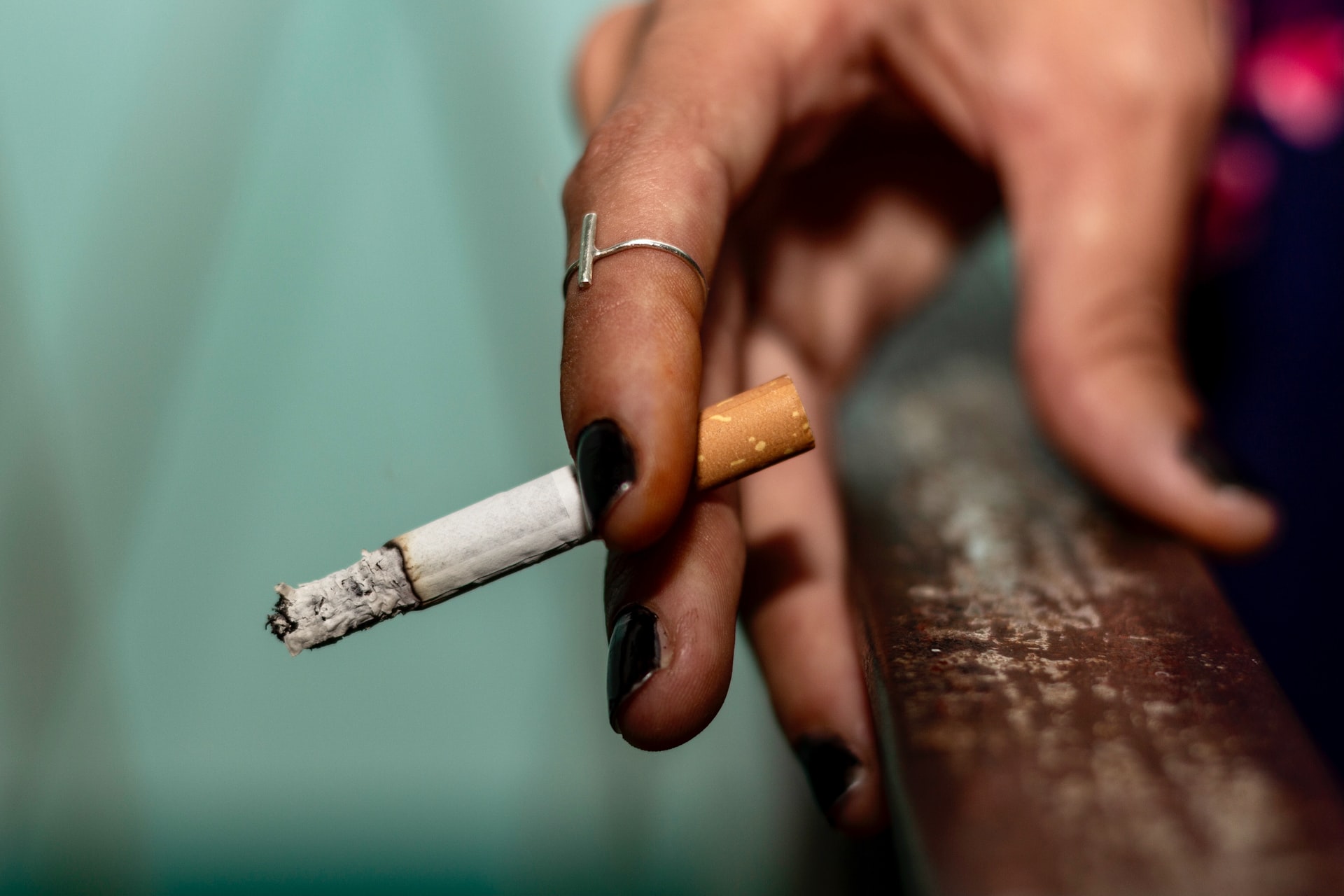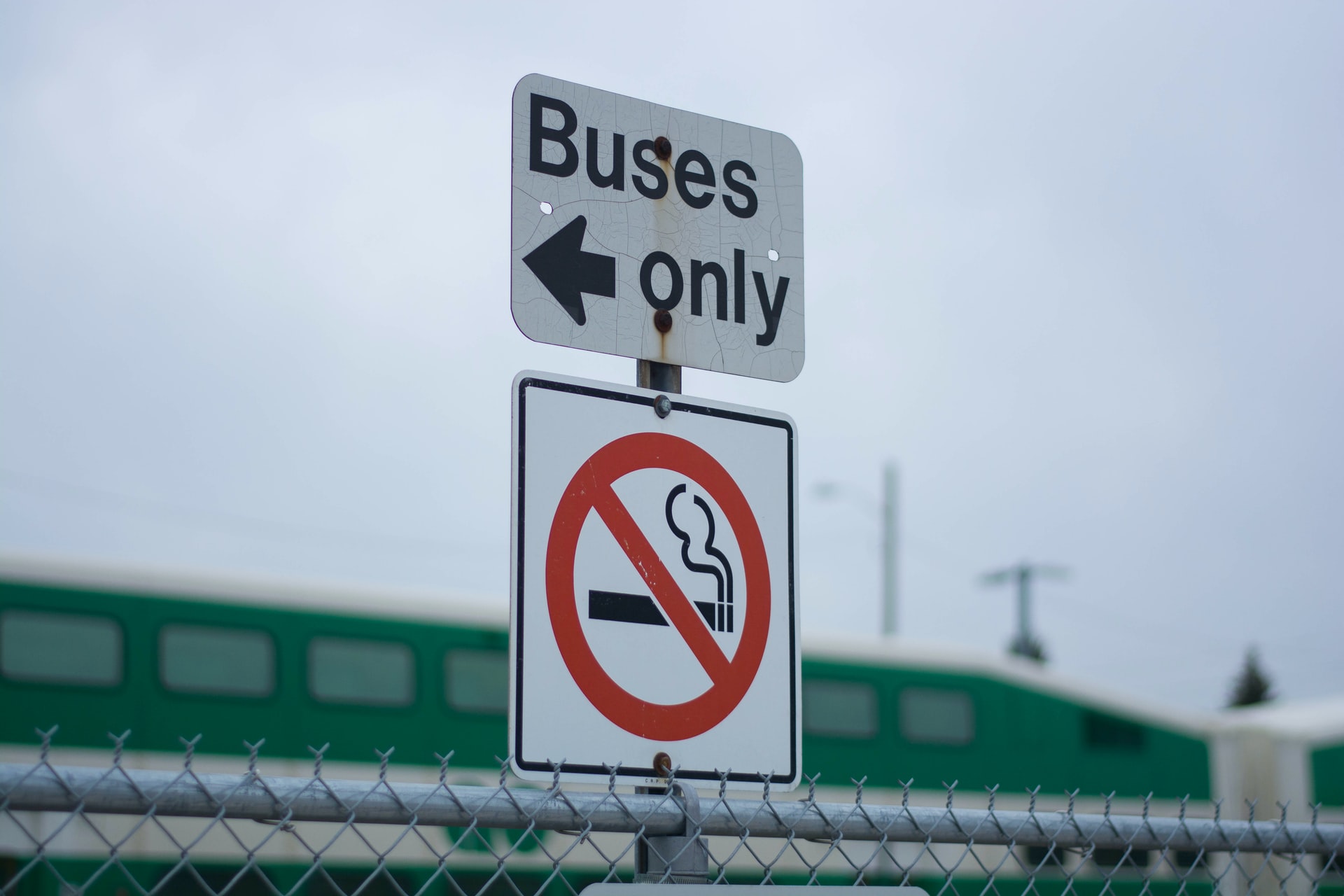- Power Home Remodeling Class Action Lawsuit Guide - November 30, 2021
- Nexplanon Lawsuit Guide - November 30, 2021
- Talcum Powder Lawsuit Guide - November 18, 2021
In 2007, the first electronic cigarettes, called e-cigarettes, hit the market in the United States. However, the United States Food and Drug Administration did not start regulating vaping until 2016, by which point Juul was already dominating the e-cig market after debuting in 2015. Juul pods and other types of e-cigarettes pose numerous health risks, many of which are severe or life-threatening. Combined with misleading and targeted advertising, difficulty banning vape products and too short of a history to set much of a precedent, e-cigarette lawsuits are a complex matter. In this article, we’ll talk about e-cigarettes and their health risks, the lawsuits brought against Juul and e-cigarette companies, what to do if you want to file a similar lawsuit, how big tobacco plays into everything, and the states that have tried to ban vape products.
An Overview of E-Cigarettes
An e-cigarette is a device that’s designed to look similar to a real cigarette. They have a battery, heater and liquid nicotine, and when the liquid is heated, it becomes a vapor that the user inhales. The liquid nicotine may have a flavor, too, like chocolate, fruit, or mint, and there’s also an ingredient in it to help it turn into vapor. The liquid is commonly referred to as e-liquid or juice.

E-Cigarettes and Nicotine
A lot of teenagers don’t realize that the nicotine in e-cigarettes is dangerous – or that their e-cigarettes contain nicotine at all. A 2019 study in Pediatrics showed that 40% of teenagers don’t know that the vape fluid they use has nicotine.
Not only does one Juul pod contain the same amount of nicotine as a pack of tobacco cigarettes (in a highly concentrated form), but competing manufacturers of other e-cigarette brands have increased their products’ nicotine levels since Juul came onto the scene. Nicotine is what keeps people vaping, as it creates an addiction loop.
E-Cigarettes and Other Harmful Chemicals
In addition to nicotine, e-cigarettes have been found to include other harmful chemicals, including:
- Carbonyl compounds
- Diacetyl
- Formaldehyde
- Lead
- Volatile organic compounds
- Other heavy metals
The presence of formaldehyde is especially concerning (we’ll get into the link between cancer and formaldehyde later). Glycerol and propylene glycol are two substances that are commonly present in e-liquids. When these substances are heated at a high voltage by the e-cigarette, over 2% of the mixture becomes formaldehyde-releasing. (The risk is lowered or non-existent when a low-voltage e-cigarette is used.)
Health Risks of Juul, E-Cigarettes and Vaping

In 2019, the FDA cataloged over 120 reports, dating back to 2010, of e-cigarette users who had neurological reactions, including seizures. Also, in 2019, the American Stroke Association presented research that found that using e-cigarettes increases the risk of coronary heart disease, heart attack and stroke.
Common and/or serious side effects of vaping include:
- Bronchiolitis obliterans organizing pneumonia (BOOP)
- Coughing
- Dizziness
- Dry eyes/mouth/throat
- Headaches
- Heart attack
- Lung injury
- Nausea
- Nicotine addiction
- Popcorn lung
- Seizures
- Shortness of breath
- Sore throat
- Stroke
Moreover, ingesting an e-liquid can poison the user and swiftly affect their cardiovascular, circulatory, gastrointestinal and nervous systems. Common symptoms of e-liquid poisoning are nausea and vomiting, but symptoms can be much more severe and life-threatening.
Next, we’ll talk more in-depth about the more severe side effects and risks of vaping.
Cancer
The vapor from e-cigarettes may be “safer” than cigarette smoke, but safer doesn’t mean safe – it just means less hazardous than the alternative. There’s evidence that vaping could expose people to cancer-causing agents, which means that vaping is far from a risk-free alternative to smoking when it comes to cancer risk.
Also, the nicotine in Juul pods and other vaping fluids may have an indirect link to cancer risks. Since nicotine is addictive, it causes users to continue using products that have cancer-causing agents, such as formaldehyde.
Research has found that over a user’s lifetime, their risk of developing a type of cancer-related to formaldehyde is up to 15 times higher when high-voltage vaporizers are used compared to regular cigarettes.
COPD
According to a 2018 study, e-cigarette vapor disables the lung’s immune cells and increases inflammation. This can raise the risk of COPD, which stands for chronic obstructive pulmonary disease. Symptoms of COPD are similar to those of BOOP.

EVALI
EVALI stands for “e-cigarette, or vaping, product use associated lung injury.” Before being officially named, EVALI was also referred to as VAPI (vaping-associated pulmonary injury), vaping-associated lung disease, vaping-associated lung injury, vaping-induced lung injury and vapor lung.
EVALI is a serious, sometimes fatal vaping-related lung injury. Symptoms include problems with the respiratory and/or digestive systems.
It became an identified and named condition by the United States Centers for Disease Control and Prevention in 2019, during a time when there was a nationwide outbreak of injuries related to vaping. After peaking in September of that year, the outbreak started to decline gradually. However, the CDC continued to get reports of EVALI into 2020.
In 2019, the EVALI outbreak hospitalized hundreds of people and led to dozens of deaths. By February of 2020, more than 2,800 people had been hospitalized with EVALI in the U.S. and its territories, and 68 deaths had resulted from the condition.
As of January 2020, the median age of EVALI patients who were hospitalized was 24, and 76% of the patients were between 18 and 34. However, people as young as 13 years old have been diagnosed with EVALI, and the youngest person to die as a result of the condition was 15.
According to the CDC, vitamin E acetate, which may be used in THC vape fluid, has a strong link to EVALI. The ingredient is often used as a thickening agent. While it’s also found in cosmetics, dietary supplements and foods, as it’s safe to apply to the skin or to eat, it’s not safe to inhale.
Seizures
Seizures are a common side effect of nicotine toxicity. In April of 2019, the United States Food and Drug Administration started to investigate reports about vaping-related seizures. A majority of these reports involved teens and young adults. By August of 2019, the FDA had identified nearly 130 reports of seizures or neurological symptoms related to vaping that took place between 2010 and 2019.
Lawsuits Against Juul (and Other Legal Troubles)
Juul lawsuits, along with other e-cigarette lawsuits, claim that vaping leads to lung disease/injury, seizures and strokes, among other health concerns. Some lawsuits claim that chemicals in the fluid of e-cigarettes cause BOOP and/or hemorrhagic strokes.
Additionally, many Juul and e-cigarette lawsuits claim that the high nicotine levels of some e-cigarette fluids or pods can lead to addiction, which can make the health risks worse for users. Moreover, some of these lawsuits claim that users were not made aware that vape fluids or pods contained high amounts of nicotine.
Other claims in Juul and e-cigarette lawsuits claim that the marketing for these products is targeted at minors. Many states have also sued Juul, claiming that the company is worsening the epidemic of vaping among youths.
Many of these lawsuits specifically target Juul, as the company accounts for 75% of U.S.-sold e-cigarettes. However, Juul lawsuits often name other big tobacco companies, such as Altria (which bought 35% of Juul in December 2018) and Philip Morris. These companies make and promote tobacco cigarettes. It’s also important to note that non-Juul e-cigarette lawsuits may include references to e-cigarette makers who have connections to tobacco companies.
Alabama College Students’ Lawsuit Against Juul
In 2019, two Alabama college students, Elizabeth Swearingen and John Thomas Via Peavy, filed a lawsuit against Juul. The students claimed that they had severe lung disorders resulting from vaping with Juul products and accidentally swallowing vape fluids.
Erin and Jared NesSmith Lawsuit Against Juul
In Florida in 2019, Erin and Jared NesSmith, the parents of a 15-year-old girl, filed a lawsuit against Juul, Altria and Philip Morris. The lawsuit claimed that their daughter had seizures as a result of accidentally ingesting e-cigarette fluid. The parents also claimed that their daughter was addicted to Juul e-cigarettes.

The FDA’s Illegal Marketing Claim
In September 2019, the FDA said that Juul was illegally marketing its products as being safer than tobacco products. Juul’s “Make the Switch” ad campaign encouraged smokers to switch from tobacco to Juul products without providing scientific proof that the switch was actually better for the health of the user.
The FDA warned Juul via a letter, which was ignored, and the ads continued to run. However, following the EVALI outbreak, the CEO of Juul stepped down and the new leader stopped running the ads. Then, vape pods with dessert and fruit flavorings were pulled from online retailers (they’d already been pulled from brick-and-mortar retail outlets).
Former Senior Vice President Lawsuit Against Juul
Siddharth Breja, the former Senior Vice President of Juul, sued the company in October of 2019. Breja claimed that he was fired after raising concerns about 1 million mint Juul pods that were contaminated and yet still shipped to consumers and retailers. (The type of contamination wasn’t specified in the lawsuit.) The lawsuit claimed that Juul would not recall the pods or issue a warning about them. Additionally, Breja claimed that Juul sold expired products.
Mass Litigation Lawsuits Against Juul
As of mid-July 2021, there were upwards of 2,300 Juul lawsuits in the United States combined in MDL (which stands for multidistrict litigation), including class action lawsuits and personal injury claims. A majority of these lawsuits were filed before mid-2019, which was when reports of deaths and lung injuries caused by vaping started to come out.
Maxwell Berger Lawsuit Against Juul
In 2019, Maxwell Berger sued Juul with a claim that his habit of vaping two Juul pods per day led to massive strokes before the age of 20. By vaping two pods per day, Berger ingested the same amount of nicotine that’s in 40 tobacco cigarettes.
According to Berger, he began using Juul products when he was in high school in 2015. Within two years, he was addicted to the point of vaping every 10 minutes.
In July of 2017, Berger had a massive hemorrhagic stroke. This type of stroke happens when blood builds up in the skull and a blood vessel near the brain bursts.
According to the lawsuit, three brain surgeries were needed following the stroke, and he spent 100 days in the hospital. As a result of the stroke, he was paralyzed on his left side, had vision loss in each eye, and speech impairment.

North Carolina Lawsuit Against Juul
In June 2021, North Carolina won a lawsuit against Juul. The company agreed to pay the state $40 million. This was the first state settlement in a Juul lawsuit. Nine (or possibly more) other states have filed lawsuits against Juul as well.
Wrongful Death Lawsuit Against Juul
In October of 2019, the first Juul wrongful death lawsuit was filed in a federal court in California.
According to 18-year-old David Wakefield’s mother, Wakefield was exposed to Juul marketing for the first time at 15 years old. After that point, he started vaping, continuing for years.
One year after Wakefield started vaping, he was hospitalized for three days for breathing and lung issues. During his time at the hospital, he had to use nicotine patches to help his nicotine cravings, as he was addicted. Upon release from the hospital, Wakefield continued to vape.
Wakefield died in his sleep in August 2019. The lawsuit claimed that Juul’s marketing conduct (aiming promotions at minors) and product defects were major factors in Wakefield’s death.
Filing a Lawsuit Against Juul
There’s currently an active lawsuit that people negatively impacted by Juul products may be able to join. If you’ve been diagnosed with addiction, a lung condition or stroke as a result of vaping, you may be able to join or file a lawsuit against the e-cigarette company. The following may mean that you’re qualified to file a Juul or vaping lawsuit:
- Death of a loved one
- Heart attack
- Lung disease/injuries
- Nicotine addiction
- Nicotine poisoning
- Pulmonary disease
- Respiratory failure
- Seizures
- Stroke
If you’re considering legal action, preserve the e-cigarette device and vaping fluids you used. Also, be prepared to answer questions about the following:
- Attempts at quitting vaping
- Exposure to Juul or e-cigarette ads on social media, especially for minors
- How long you’ve been vaping
- How often you vape (average use in a day)
- Injuries you have experienced or are experiencing (you’ll be asked to provide medical documentation for confirmation)
- How vaping-related injuries have made your life more difficult
Since vaping lawsuits and the medical injuries involved can be complicated, it’s always best to speak with an attorney who has experience with this type of lawsuit.
The 1998 Master Settlement Agreement With Big Tobacco

The 1998 Master Settlement Agreement, which was between 46 of the United States, D.C. and five U.S. territories versus major tobacco companies, plays a big role in understanding the state of e-cigarette lawsuits, as it had a huge impact on tobacco control. E-cigarette litigation is still fairly new, but tobacco litigation has a much longer history, and many of the same claims are made in both tobacco and vaping lawsuits.
This was considered the largest civil litigation in U.S. history, and it was an enormous victory for the involved U.S. states and territories. Major tobacco companies had to pay billions of dollars via annual installments. The money paid was considered compensation for all of the taxpayer money that was spent on tobacco-related diseases and economic loss.
Additionally, the Master Settlement Agreement included a call for an independent organization to be created and funded that would help prevent youth from using tobacco. Today, that organization is known as the Truth Initiative.
Also, there were new boundaries put in place for advertising, marketing and promoting cigarettes:
- Billboard, outdoor and public transportation advertising could not promote cigarettes
- Cigarette advertising could no longer include cartoons
- Merchandise could not include cigarette brand names
- Tobacco advertising could no longer target people under the age of 18
Lastly, as part of the Settlement, millions of internal documents from tobacco companies were made public.
The Master Settlement Agreement was first signed in November of 1998, and since then, approximately 40 other tobacco companies have signed it and are required to follow its terms.
State Bans of Vape Products
In June of 2019, San Francisco – the home of Juul’s headquarters – became the first U.S. city to ban the sale of all vape products, a ban that would begin in 2020. Several other cities, counties and states in the U.S. have tried to exercise control over vaping and vape products, though most have faced legal roadblocks, and not all have been successful.
California – Los Angeles County
Starting in October 2019, Los Angeles County in California banned flavored tobacco products, which included vape products. However, online sales were still allowed.
Massachusetts
At the end of September 2019, a temporary ban that the governor ordered took effect. Juul, e-cigarette and vape products were banned from being sold both online and in brick-and-mortar stores. The ban was ruled as flawed by a state judge, but it was allowed to remain until the end of October of that year when the state had a deadline to rewrite the ban.
Michigan
The governor created a six-month emergency ban to begin in mid-September 2019. The ban was on the sale of flavored vape products. While vape businesses tried to stop the ban, a judge ruled in favor of it, and the ban began on October first of that year. However, by mid-month, another judge ruled against the ban and blocked it, and vape shops were allowed to sell their products again.
Montana
A 120-day ban was set to start toward the end of October 2019. However, a state judge blocked the ban a few days before it was meant to start.
New York
In mid-September 2019, New York announced that a majority of flavored vape products would be banned, with the exception of menthol-flavored products. The ban was supposed to start in October and be renewed every 90 days. However, a state court blocked the ban before it went into effect.
Ohio
In September of 2019, a bill was introduced to ban flavored vape products.
Oregon
A six-month ban was supposed to begin in mid-October 2019, which would ban cannabis and flavored nicotine e-cigarette products. A state court partially blocked the ban.
Rhode Island
A 120-day ban of flavored vape products took effect in October of 2019.
Utah
In October 2019, Utah set emergency limits on flavored nicotine product sales. Only specialty tobacco shops could sell flavored tobacco and vape products. Additionally, the stores had to post notices about vaping dangers regarding unregulated THC-containing products.
Washington
An emergency 120-day ban began at the beginning of October 2019.
Frequently Asked Questions
Question: Can I file a lawsuit against Juul?
Answer: If you feel like you have a case against Juul (or another e-cigarette company), it’s best to speak with an attorney who specializes in those types of lawsuits. If you or a loved one suffered addiction, an illness, an injury or death connected with vaping, you might have a case.
Question: Are Juul Pods or Cigarettes Worse?
Answer: In terms of nicotine, Juul delivers more nicotine per puff than traditional cigarettes, as well as compared to earlier-generation e-cigarettes. The impairment of blood vessel function by Juul is comparable to that of regular cigarettes.
Question: Does Juul Have a Warning Label?
Answer: According to the Juul Labs website, there is a warning label on the packaging for pods that discloses that the product contains nicotine as well as cancer-causing chemicals. This is in accordance with FDA regulations.
Wrapping Up
To recap, here are the top claims made in lawsuits against Juul:
- Juul marketed products in a way that was specifically targeted at minors.
- Juul promoted the use of nicotine.
- Marketing for Juul did not warn that its products are more addictive and potent than regular cigarettes.
- Juul products are dangerous and can be defective.
The more e-cigarette use there is by teenagers and young people, the more e-cigarette lawsuits there will be. And litigation is not expected to slow down any time soon.
For now, while bans and lawsuits have trouble getting underway, the best defense is education. Understanding the risks associated with vape products is the first step to making better health decisions and to knowing if you have a potential case against an e-cigarette maker.
Recommended Reads:
- Actos Lawsuit Explained – Trials and Settlements
- Uber Lawsuit Guide: All You Need To Know
- Cenlar Lawsuit: Mortgages Class-Action Settlement Explained
Sources
1. Drugwatch: E-Cigarette Lawsuits
2. Poison Control National Capital Poison Center: E-Cigs and Toddlers
